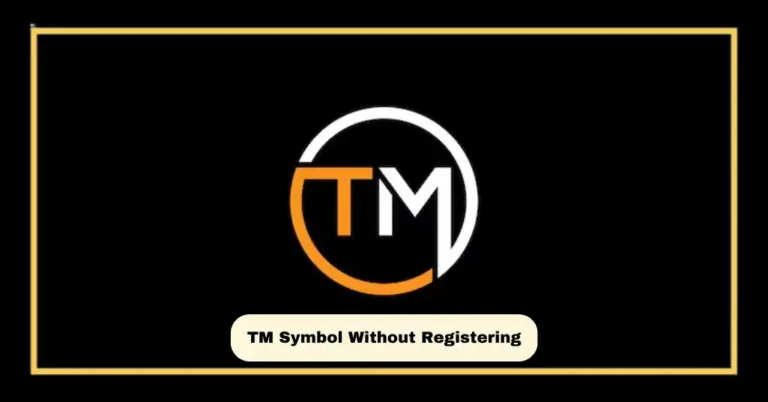In the metaverse, protecting trademarks is a whole new ballgame. Our article covers the basics of trademark protection in this virtual world and offers strategies for safeguarding your brand's reputation.
Overview
The concept of trademarks has been around for centuries. With the advent of the Trademarks Metaverse, the meaning and importance of trademarks are changing rapidly. It helps identifies and distinguish a product or service from others. Trademarks help consumers recognise and trust a brand. It protects the brand owner’s reputation and revenue.
The metaverse is a virtual world where people can interact with each other and digital objects in real time. The concept of trademarks is taking on a whole new level of complexity. In the metaverse, brands can create immersive experiences for their customers.
They offer virtual products and services that significantly impact their revenue. However, with this new level of virtual interaction, protecting trademarks in the metaverse becomes a challenge.
Definition of Trademarks
Trademarks are distinctive signs, such as words, logos, or symbols. It identifies and distinguishes goods or services offered by one entity from those of others. Their primary purpose is to protect the reputation and goodwill of a brand. It enables consumers to make informed choices and develop trust in the products or services they purchase.
Function of Trademarks Metaverse
Trademarks play a crucial role in business by distinguishing one company’s offerings from its competitors in the marketplace. They are a valuable tool for brand owners to build and maintain a distinct identity. Some of the functions are.
- Trademarks distinguish goods or services of one entity from others in the marketplace.
- They create a unique visual or auditory representation associated with a brand.
- Trademarks help build and maintain a distinct brand identity.
- They establish consumer recognition and trust in a brand.
- Trademarks protect the investments made in research, development, and marketing.
- A strong trademark can become synonymous with quality and reliability.
- Trademarks enable consumers to make informed choices and differentiate between products or services.
- They foster brand loyalty and customer satisfaction.
- Trademarks serve as a valuable marketing tool for businesses.
What Does the Metaverse Mean for Brands?
The Metaverse, a new digital realm, presents businesses with opportunities to reach a broader audience, expand their online presence, and increase revenues. Recognizing the immense potential, major brands have already begun formulating marketing strategies to tap into this virtual world. Just like on existing social platforms, the Metaverse requires digital brands to have a voice suitable for the platform and behave accordingly based on the environment.
Establishing an authentic brand image that extends into the Metaverse is crucial. Brands view the Metaverse as a digital platform to grow their business, similar to the real world. Trademarks play a vital role in helping companies safeguard their brand and prevent misuse by competitors. Registering trademarks for use in the Metaverse is becoming a reality rather than just an idea.
Nike’s foray into virtual reality is not entirely new. In 2019, Nike collaborated with “Fortnite,” where game characters sported Nike sneakers. The company is also partnering with Roblox to develop a virtual world called “Nikeland,” enabling users to dress their avatars in Nike apparel. Furthermore, Nike acquired the NFT studio RTFKT, which specializes in creating virtual sneakers and collectables. In 2019, Nike even secured a patent for “CryptoKicks,” a system that links digital assets like NFTs with physical products such as sneakers.
Top Three Reasons to Trademark a Brand for the Metaverse
Trademarking your brand for the Metaverse prevents others from trademarking it and stealing it from you.
- It will prevent anyone else from registering a brand with the same or similar name in the Metaverse.
- It will boost customer confidence in your brand, resulting in increased trust and value.
- It is an effective technique for preventing unauthorised usage of your trademark by copycats in the Metaverse.
Why Trademarks are Important in the Metaverse?
Trademarks are essential in the Metaverse because they help a company protect
- Their name
- Logo
- Slogan.
These are things that make a company unique and different from others. When a company registers its trademark with the government, it can use it exclusively. This helps avoid confusion among customers. If a company doesn’t protect its trademark in the Metaverse, other people can use it. It can harm its reputation and profits.
Overview of the Trademarks Metaverse and Its Increasing Importance
The metaverse is a rapidly evolving digital world that offers endless possibilities for interaction and commerce. It is an immersive space where people can
- Socialise,
- Play games,
- Attend events, and
- Shop for virtual products.
The metaverse is also becoming increasingly important as a platform for business and marketing.
Many companies are already exploring the potential of the metaverse. It is to connect with customers and drive sales. In the metaverse, brands can
- Create virtual storefronts
- Offer virtual products
- Even host virtual events.
Metaverse will be an essential platform for businesses to engage with customers. It will help them to generate revenue.
Obtaining a Metaverse Trademark
The process to obtain a trademark for the Metaverse involves several steps:
Step 1: Check Trademark Availability
Conduct a comprehensive search in the US trademark registry database to ensure that the desired trademark is available and not already registered by someone else. This step helps identify any identical or similar trademarks that may pose conflicts.
Step 2: File the Trademark Application
Once you confirm the availability of the trademark, gather all the necessary information and file an application with the United States Patent and Trademark Office (USPTO). Provide accurate and complete details about the trademark, its intended use, and associated goods or services.
Step 3: Trademark Examination
The Trademark Examiner at the USPTO will review your application and examine it based on various grounds. This includes assessing the distinctiveness of the mark, potential conflicts with existing trademarks, and compliance with trademark laws and regulations.
Step 4: Office Action and Clearance
If the Examiner identifies any issues or errors in the application, they will issue an Office Action notice, informing you of the concerns that need to be addressed. You will be given an opportunity to rectify the application or provide necessary clarifications within a specified timeframe. Once all concerns are resolved, the application moves forward.
Step 5: Publication and Opposition Period
After the trademark application passes the examination, it is published in the Official Trademark Gazette, giving other companies and individuals a chance to oppose the registration within a 30-day period. If an opposition is filed, the USPTO will evaluate the claims and evidence from both parties.
Step 6: Final Registration
If no opposition is filed or any opposition is successfully resolved, the trademark application proceeds to final registration. The USPTO issues a ‘notice of allowance’ and the applicant pays the necessary fees. Upon completion of the registration process, the trademark is officially registered and protected.
It is important to note that this process applies specifically to obtaining a metaverse trademark in the United States. The specific requirements and procedures vary in different countries.
Strategies for Protecting Trademarks Metaverse
While protecting trademarks in the metaverse is challenging, there are several strategies that brands can use to safeguard their intellectual property rights.
| Strategies | Advantages |
| Establish a Strong Virtual World Presence |
– Establishes legitimacy in the metaverse – Easier identification and tracking of infringers |
| Use Advanced Technology Such as Blockchain |
– Creation of unique digital identities for products and services – Easier tracking and identification of infringers – Enforce trademark protection across jurisdictions |
| Use Legal Tools Such as Trademarks, Patents, and Copyrights |
– Legal action can effectively protect a brand’s reputation and revenue – Option to consider, despite challenges in the metaverse |
Trademark Related Issues in the Metaverse
The intersection of the virtual and real world has presented both opportunities and challenges for trademark owners and users, particularly in the gaming industry.
The use of real-world trademarks in video games that simulate the real world has raised concerns and legal issues. Here are some notable examples:
ESS Entertainment 2000, Inc vs Rock Star Videos, Inc
This case involved the depiction of a real-life strip club in the game ‘Grand Theft Auto: San Andreas’. The court ruled that the use of the strip club’s logo and trademarks in the game did not infringe on the strip club owner’s rights, as the video game was considered a work of art protected under the First Amendment.
User-Generated Content in Virtual Worlds
Online games like Pokemon Go, The Sims, and Second Life, where users can create their own virtual worlds and market intellectual property, have raised concerns about the unauthorized use of third-party trademarks and potential brand dilution. Users may sell or buy virtual items bearing third-party trademarks, which poses challenges for trademark owners.
Minsky vs. Linden Research, Inc
In this case, a user-created avatar in the game Second Life used the mark “SLART GARDEN” for a virtual art gallery, which resembled the plaintiff’s registered mark “SLART.” The case was settled before a decision on the merits was reached.
Leo Pellegrino vs. Epic Games, Inc
The plaintiff claimed that the popular video game Fortnite featured a virtual saxophone-playing avatar that copied his dancing moves. The court dismissed the claim based on the First Amendment and stated that the allegations were better suited to copyright law.
AM General vs. Activision Blizzard
AM General, the manufacturer of the Humvee truck, filed a trademark infringement lawsuit against Activision Blizzard for featuring the truck in the video game Call of Duty. The court upheld Activision Blizzard’s claim under the First Amendment, considering the use of real-world vehicles in the game as artistic expression and evoking realism.
These cases demonstrate the evolving nature of trademark law in the digital space. The risks and liabilities associated with using third-party trademarks in virtual worlds are more significant when they are used for commercial benefit.
As the use of trademarks in virtual environments continues to grow, it is important for trademark owners and users to navigate these complexities and ensure proper protection and usage of trademarks.
Challenges of Trademark Protection in the Trademarks Metaverse
Protecting trademarks in the metaverse is a significant challenge due to the nature of the virtual world. Some of the challenges are:
- The metaverse is a decentralised and open platform where anyone can create and share content. It includes virtual products and services. This creates a unique challenge for trademark protection
- It can be difficult to identify and track down infringers in the metaverse. It makes it challenging to enforce trademark protection across different jurisdictions
- The metaverse operates on a global scale. It makes it even more challenging to enforce trademark protection
- There are few regulations in the metaverse to protect trademarks. It can lead to the creation of similar virtual products or services that may dilute the value of a brand’s trademark.
Conclusion
Trademarks metaverse are becoming increasingly important. More businesses look to capitalize on this new virtual world. Protecting trademarks in the metaverse can be challenging.
But, there are many effective strategies that brands can use. It helps to safeguard their intellectual property rights. It helps to maintain its reputation in this new digital landscape. With the right strategies, companies can successfully navigate this new digital world and thrive in the metaverse.
Vakilsearch can help businesses protect their trademarks in the metaverse. Vakilsearch’s experienced legal team can help companies to navigate the complex legal landscape of the metaverse. Contact us today.
FAQ
Who is trademarking brands for the Metaverse?
Everyone seemed to be preparing for the Metaverse. Every month, more brands apply to trademark their brands for Metaverse. Here are just a few examples: Nike Converse Elvis Presley Enterprises Hot Wheels Sports Illustrated Vanity Fair
How Do You Protect a Brand in the Metaverse?
Trademarks protect brands, including Metaverse brands. The best way to protect your brand's name, logo, and slogan for virtual goods and services is to trademark it.
Should You Apply for a Metaverse Trademark?
Yes, if you already have a trademark, you should apply for a Metaverse trademark as well. Filing for your Metaverse trademark right now is the most effective way to avoid someone else from trademarking it for their Metaverse business.
Where Do You Get a Metaverse Trademark?
If you wish to protect your trademark in the US, you can get a Metaverse trademark from the U.S. Patent and Trademark Office (USPTO).
How can you check if a brand is trademarked for the Metaverse?
You can check if your brand is trademarked for the metaverse with the help of professional trademark search experts at Vakilsearch.
What are some products to include in a trademark application for the Metaverse?
• Digital goods • Internet environments, virtual online environments, and extended reality virtual environments • Downloadable software that allows users to search, explore, view, and buy virtual products • Services provided by retail stores that include virtual items • Entertainment services, such as delivering non-downloadable virtual items online • Software for virtual reality gaming and interactive entertainment • Software for creating, manufacturing, and altering digital designs and characters, avatars, digital overlays, and skins
Read More:










